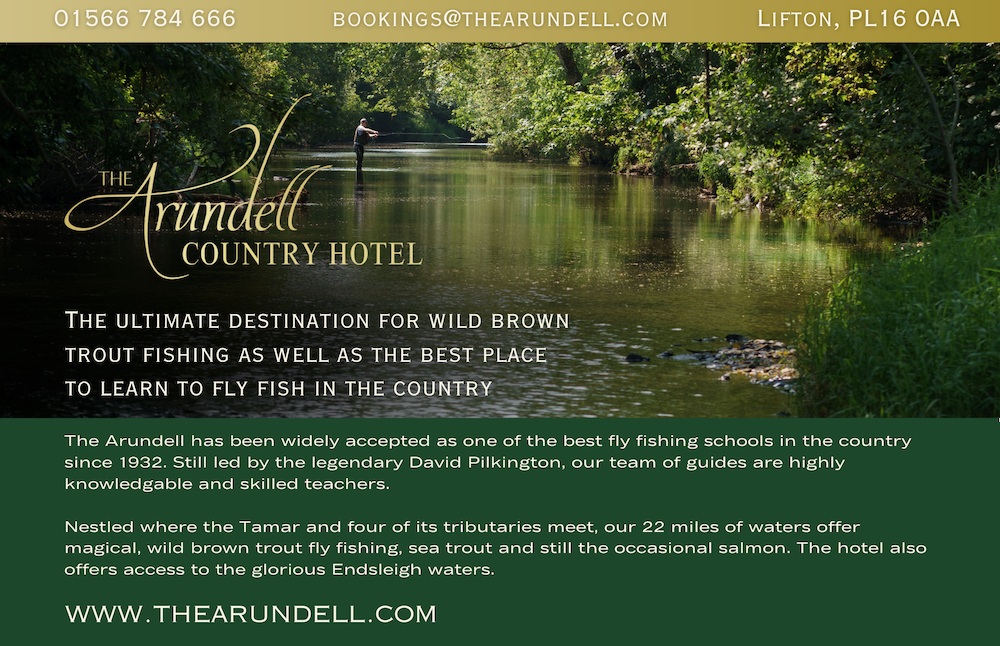South West Lakes Trust Trout Fisheries Report
April 2025
Although the temperatures have at last started to rise during the day, nights have been cool, meaning that water temperatures are still low, and while there have been some insect hatches during warmer spells during the day, the trout are still generally remaining in the deeper water, with most lakes requiring a sunk line to find fish. The Trust has run a number of successful introductory days at the rainbow waters in conjunction with the clubs, with many newcomers managing to catch a fish. Most lakes are still at top level.
Fishing:
Kennick – Fishing improved as the month progressed, with the overall monthly average of 4.6 fish per rod improving to a weekly average of 5.3 by the end of the month. Fish have been well spread out in the deeper water around the lake, with The Lawns, Clampitts, The Lodge Bank and Oak Tree Point fishing particularly well, with boat anglers also picking up fish in the mid channel. Sinking and Intermediate lines have been the preferred tactic, generally with a slow retrieve. Buzzers have been hatching during warmer spells, although most fish have taken deep-fished nymphs (Damsels, Buzzers, Hares Ear and Pheasant Tail Nymphs), or more often lures (Black Tadpole, Poodle, Tequila Blob and a selection of different coloured Boobie patterns). The best fish of the month (and at Kennick so far this season) was a 5lb 4oz rainbow, caught by Russell Bridgeman; Michael Peppitt caught a rainbow of 4lb 9oz, while Lee Cann caught a 4lb rainbow. Many of the fish caught contained black buzzers.
Siblyback – The early season success at Siblyback continued throughout April, with anglers averaging 4.5 fish per rod, with fish feeding throughout the water column, and being caught on Floating, Intermediate, and Sinking lines, generally fishing with a slow or medium retrieve. Crylla Bay, West Bank, Stocky Bay and Two Meadows produced the best sport, with fish taking a selection of nymphs (Montana, Damsel, Buzzer), lures (Blobs, Orange Snakes, Tadpoles and Scruffy Tigers), and even some dry patterns (Foam Hawthorn, Hopper and Grey Wulff) when midges were hatching. Nine teams of four took part in this year’s Snowbee Team Bank Competition, with 126 fish landed in total; the Kennick ‘A’ Team (John Hern, Darren Penfold, Paul Wicks and Alex Venn) caught 24 fish, weighing in at 35lb 2oz to win the competition, while Andrew Fotheringham caught the best fish of the day – a fine rainbow of 3lb 12oz. Ron Wilday (from Liskeard) enjoyed an excellent day’s sport, catching nine rainbows to 1lb 8oz fishing in Crylla Bay.

Burrator – Weekly averages varied between 0.6 and 2.8 fish per angler, with the best sport to be had at Longstone, Back Bay, Sheepstor and Pig’s Trough. Fish tended to be in mid to deep water, when either a sinking line, or a floater with a long sink-tip and a slow retrieve proved to be the most successful tactic. A few fish were taken from the surface using a Black Gnat, Bob’s Bits, CDC or Black Hopper, but the majority preferred either a sunk nymph (Pheasant Tail, Montana, Damsel or Hares Ear) or lure pattern (Tadpole, Orange Fab, Orange Zonker).

Stithians – The sport continued to improve as the month progressed and the conditions turned milder, with anglers averaging 3.5 fish per visit. The fish tended to be nearer the surface, with floating lines and a sink-tip fished with a slow retrieve proved to be the most successful method. Goonlaze, Hollis Bank, Pub Bay and the deeper water by the dam produced the best sport. Successful fly patterns included Cormorants, Orange and Black Blobs, Orange FAB, Damsel and Montana nymphs, as well as a few fish taking dry Black Gnats, Stithians Mayfly and Black Klinkhammers.
Colliford – Apart from one week, when a very strong easterly wind made the fishing difficult, anglers averaged 2.7 fish per rod, with fish being found in the deep water by the dam, as well as along the East bank, Pines, Menaridan Point and the West Arm. Generally floating lines fished with a variety of retrieves (fast strips, followed by very slow) worked well. Good hatches of Midges and Olives, as well as the odd Hawthorn and Beetle on the water meant that fish were looking up to feed, and could be caught on dry Hawthorns, Black Gnats, Claret Hoppers, Daddies and Beetles. Sub-surface feeders took Hares Ears, Mini Tadpoles, Damsels, Zulus and Soldier Palmers.
Fernworthy – The fishing was slower to pick up on this high exposed Dartmoor water, although weekly averages did pick up to 2.4 fish per visit toward the end of the month. The South bank and water below the Fishing Hut proved to be the most productive, with the browns taking Bibio, Hares Ear, Zulu and Goldhead Damsel, as well as rising to Beetles, Klinkhammers and Hoppers on the stiller, warmer days, when midges were hatching.

Roadford – The good sport at Roadford continued throughout the month, with anglers averaging 3.5 browns per visit. Floating or intermediate lines with a varied retrieve (Slow, Medium, and jerky fast strip) produced the best sport, with the best locations including South Wortha, Daveys Bank and Gaddacombe. Although the occasional fish would rise to a Green Hopper, most fish were taken on subsurface patterns (Black Tadpole, Mini Scruffy Tiger, Damsel and Olive Buzzer).
Please see the Trust’s website (www.swlakestrust.org.uk/trout-fishing) for more information on buying tickets, boat availability and booking, and forthcoming events.
Chris Hall (April 2025)


